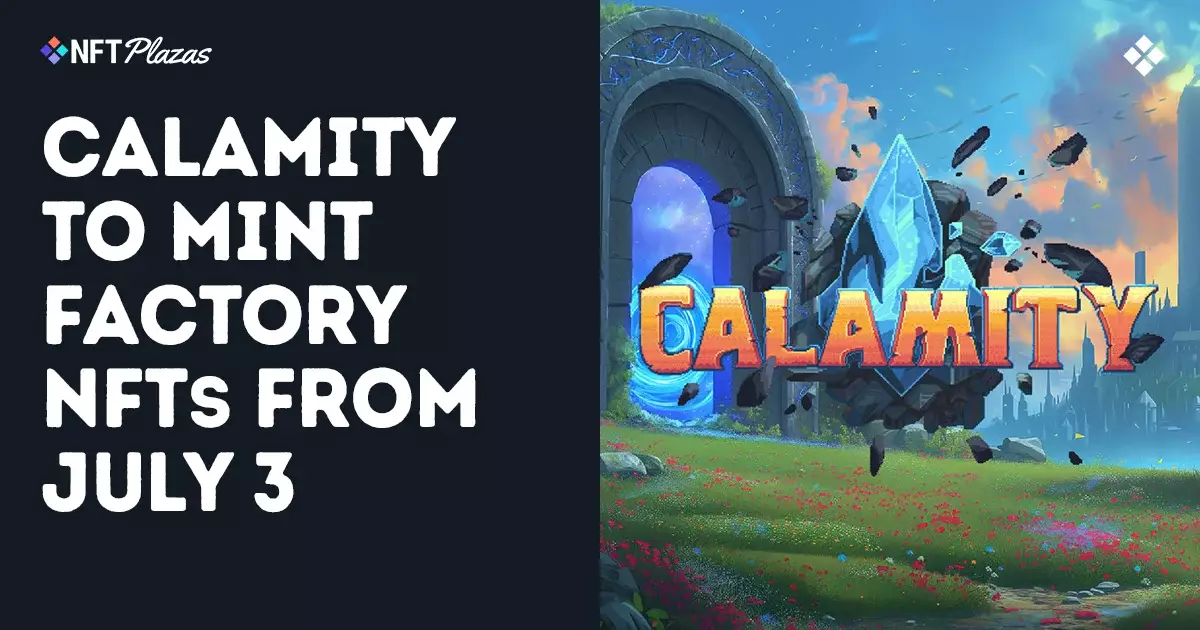Calamity’s upcoming launch of Factory NFTs, positioned as a “key” component in their $WYRM token ecosystem, exemplifies a growing trend in the blockchain gaming sector: an overreliance on buzzwords like “utility” and “play-to-earn” without clearly demonstrating sustainable or meaningful value. While the promise of a “personal in-game space” and “unique mechanics” sounds appealing, the reality often falls short. Too frequently, these digital assets serve as glorified access keys or vanity items, rather than truly transformative in-game elements. The emphasis on customization and staking rewards tends to obscure the larger question — does the gameplay itself justify player investment, or is it a thin veneer to attract speculative capital?
Speculation Cloaked as Gameplay
Launching Factory NFTs at $40 each, with a total cap of 9,999 units, risks reducing the game’s community to a speculative marketplace rather than a passionate player base. The tiered merging system — where players upgrade from Tier 1 to Tier 5 NFTs to boost token rewards — resembles a financial pyramid more than an organic growth of player skill or accomplishment. This tiered escalation encourages investment chasing higher returns, shifting focus from genuine game engagement to profit-seeking behavior. Games built on speculation aren’t sustainable; when token value or NFT demand falters, the player ecosystem collapses alongside.
Blockchain Gaming’s Unresolved Technological Constraints
Calamity’s choice to build on Ronin and enable payments in both Ronin and Ethereum tokens highlights the ongoing friction in blockchain gaming infrastructure. Ronin provides faster transactions and better scaling than mainnet Ethereum, but it remains a niche solution requiring additional user education and bridging. This fragmentation inherently limits accessibility and fluid adoption amongst mainstream gamers, many of whom remain wary or confused by crypto wallets, gas fees, and token economics. Until these technological pain points are solved, the integration of NFTs and play-to-earn will be hamstrung, marginalizing the broader audience Calamity so clearly desires.
Questionable Longevity of Play-to-Earn Models
The “performance-based” play-to-earn mechanics touted for Season 1 may invigorate initial interest, but they have yet to prove long-term viability. Most P2E models to date function effectively like yield-generating machines: early adopters reap outsized rewards, while latecomers inherit devalued tokens or inaccessible content. Without robust design balancing growth incentives with fair play and retention, the system sharply incentivizes “grinding” for monetary gains rather than authentic enjoyment or community building. Such structures risk fostering transactional rather than experiential player relationships.
Land NFTs — Innovation or Isolation?
Factory NFTs offering “personal in-game space” echo a trend seen in many metaverse and blockchain games seeking to monetize land ownership. While the concept has potential to deepen immersion through player-controlled hubs and crafting systems, it simultaneously risks fragmenting the player base and discouraging social cohesion. Isolated “landowners” might retreat into siloed experiences rather than fostering the collective gameplay essential to MMORPG vitality. This dynamic could degrade the social fabric and convert a multiplayer game into a loosely connected assembly of investors.
Token Airdrops and the Illusion of Value
Calamity’s promise of $WYRM token airdrops to Factory NFT holders is a classic tactic to boost initial sales and NFT desirability. However, token airdrops are often little more than marketing bandaids that inflate perceived asset value temporarily. The true test lies in $WYRM’s ability to maintain utility, liquidity, and demand absent continuous airdrops or speculative pump cycles. Many blockchain games have stumbled after token launches, as lack of organic use cases emerged post-hype. This underlines the need for Calamity to develop game mechanics that genuinely integrate $WYRM as a necessary and valuable part of gameplay, rather than relying on periodic financial incentives.
The Mirage of Early Bird Exclusivity
The Early Bird sale of Factory NFTs, releasing 2,160 units on July 3, creates a sense of urgency designed to allure buyers driven by fear of missing out. While early access can reward dedicated fans, it can also restrict fair participation and foster an atmosphere where NFTs become scarce commodities sold purely for profit. This exclusivity risks alienating casual gamers who cannot—or choose not to—invest upfront, clashing with MMORPGs’ inherently broad appeal. Democratizing access rather than monetizing early entry would better serve long-term community health.
Calamity’s integration of NFTs, staking, and a token economy treads a familiar path littered with promise yet fraught with pitfalls. Their ambitious roadmap, drawing inspiration from established RPGs, is commendable for attempting innovation within the blockchain sphere. However, the overemphasis on financial incentives—tiered NFT power, airdrops, land ownership—threatens to overshadow the core of what makes a great MMORPG: engaging storylines, compelling gameplay, and a thriving player community. Those intrigued by Calamity’s offering should approach with cautious optimism, recognizing the speculative elements at play and demanding that token economics never eclipse authentic gaming experiences. The future of blockchain gaming depends not on the flood of NFTs, but on delivering substance that justifies their existence.


Leave a Reply